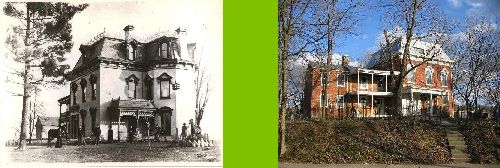I've been cleaning up the residence basement and was wondering what kind of paint had been applied to the walls. It is flat, white, thick and textured with sand in a few locations. So I looked in the old "Household Hints and Discoveries" book from 1909 and found this recipe for cellar paint;
Slake enough lime for a pailful of whitewash. Mix half a pint of flour with cold water to a smooth paste, thin with scalding water, and boil until it thickens. Pour this boiling hot onto the whitewash and stir vigorously.
Or use boiled rice strained through cheese cloth. Add a teacupful of the strained rice to a pailful of slaked lime. Cover cellar walls twice a year or oftener with whitewash, to which add copperas at the rate of 2 pounds to a gallon. Apply whitewash freely, removing all shelves, etc., so as to cover the entire surface of the walls.
So, what do you think I did?
That's right. I made me a batch and went at it. (Without the iron sulphate of course.) In fact I have made two batches. It works really well. It goes on like a gooey paste and dries to a brilliant white. It covers stains pretty good too. I don't know about painting my basement twice a year since this is the first time I've done it in 14 years. One more thing, I can't tell if I like the whole wheat or bleached all purpose flour better ...

3 comments:
Well, the WW flour might leave bits of brown bran peeking through...
I bet that's considered green paint too, very smart!
Glued whitewash... interesting idea! Sounds like a crossing of distemper (aforementioned glue with powdered chalk) and whitewash (slaked lime with water). I guess the glue makes the whitewash less prone to rub off the wall and the lime makes the distemper more moisture resistant.
We might use that stuff in our farm house some day... thanks a lot!
Post a Comment